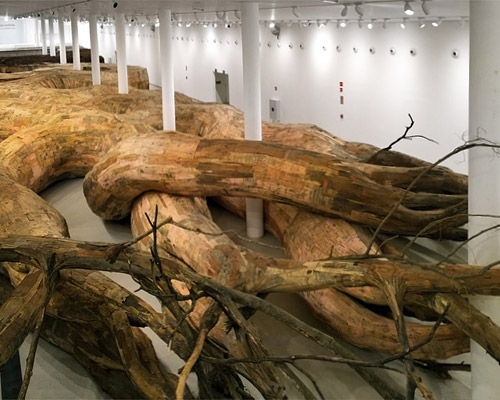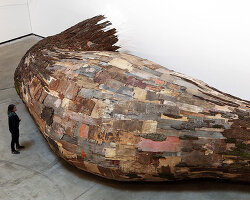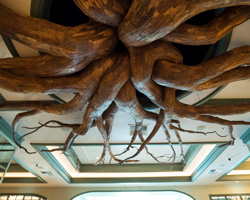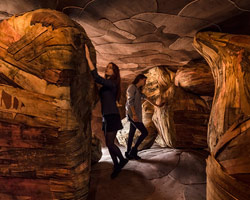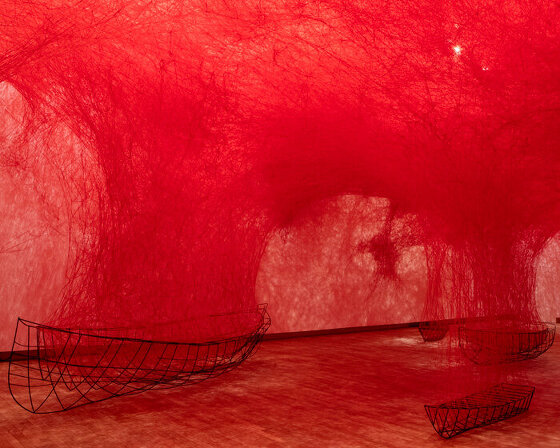henrique oliveira roots his largest installation to date at the MAC, sao paulo
(above) installation of transarquitetônica at MAC USP, são paulo, brazil
photo by sergio miranda
brazilian artist henrique oliveira has occupied the vast gallery expanse of the museum of contemporary art, university of são paulo with ‘transarquitetônica’, his largest immersive installation to date. using materials recycled from his home city’s urban fabric, oliveira has configured a massive series of snaking wooden columns wrapping through the interior space, which can be entered and experienced by the visitor.
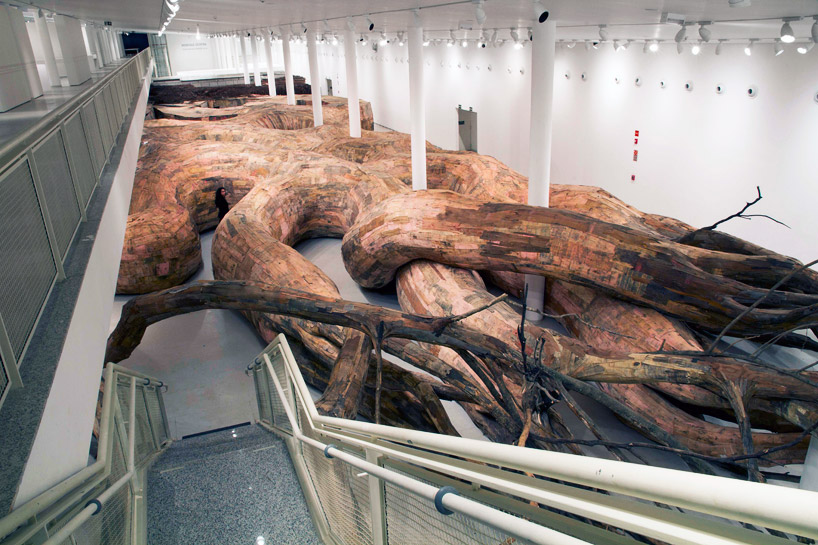
the installation at the MAC, sao paolo weaves through the massive gallery space
the various routes with multiple possibilities are designed to embrace the observer in a sculptural universe, with the smells, sounds and sights of the medium surrounding them within the form. shifting in narrative and aesthetic from front to end, the piece epic proportions begins as the knotted roots of a tree, and finishes as narrow, white-painted corridors, symbolically expressing the evolutionary transformation in architecture from the caves which served as shelter to men and women for millennia to the high-rise buildings in the sky we occupy today.
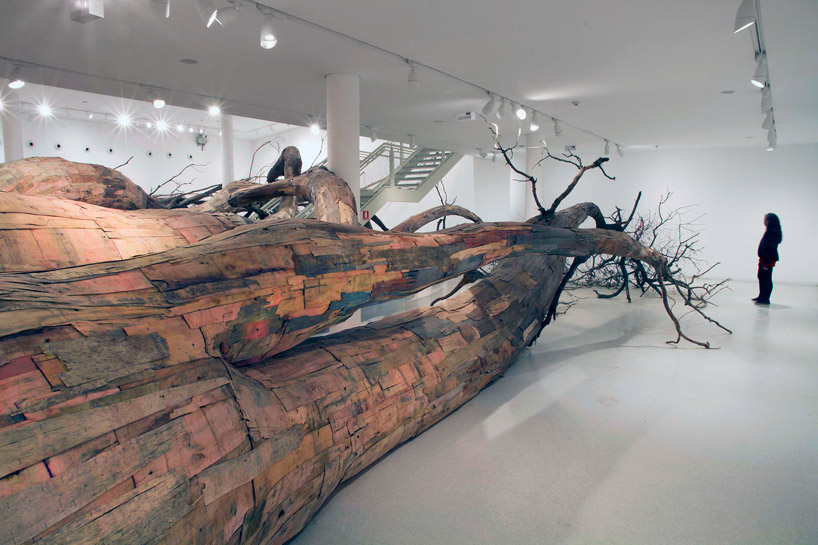
the end of the installation appears as the knotted roots of a tree
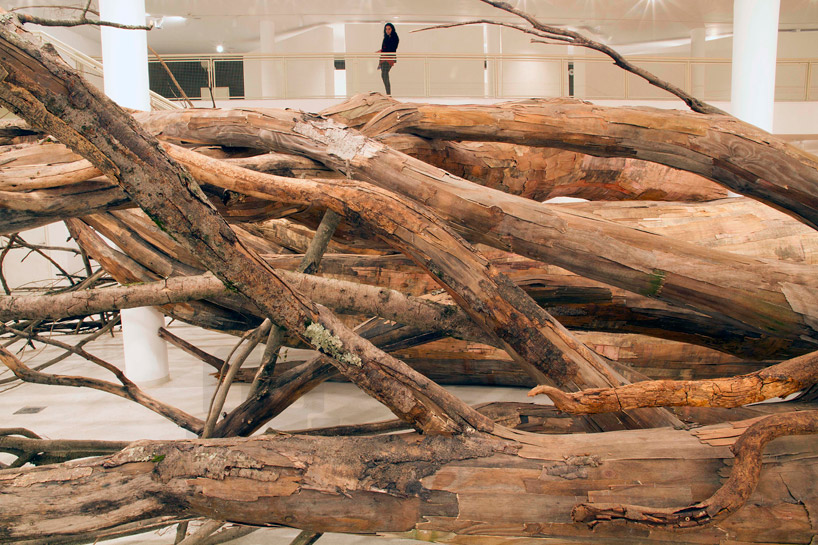
transarquitetonica towers throughout the brazilian gallery space
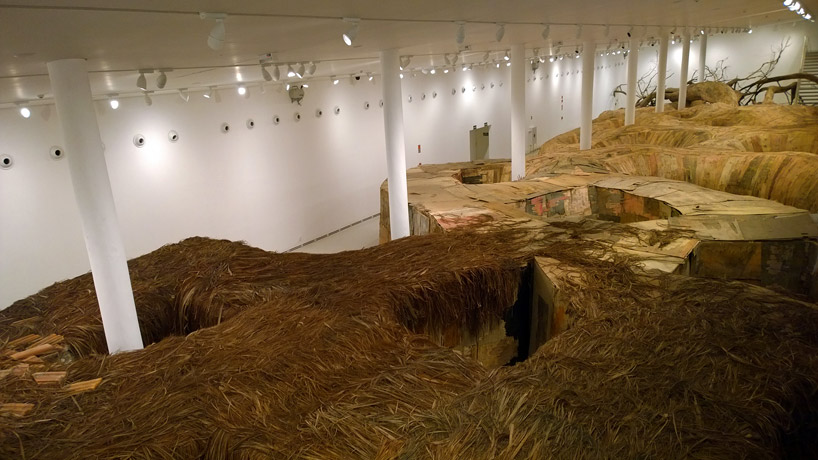
front front to end, the installation shifts in aesthetic and narrative
photo by sergio miranda
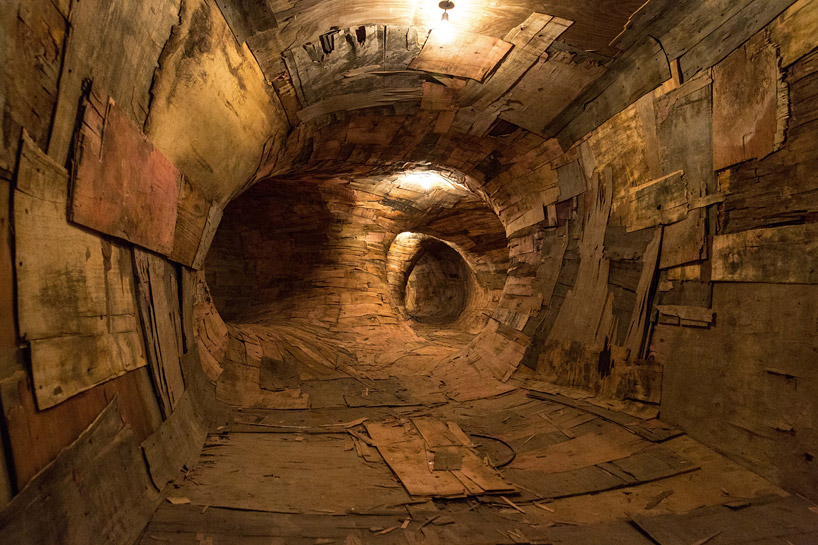
within the tunnels, the material smells and feels like the urban fabric of brazil
photo by elaine maziero
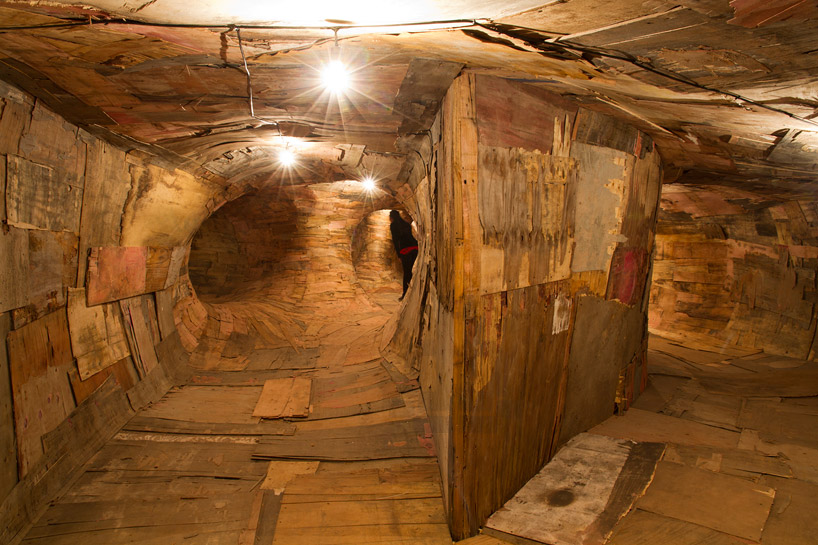
different routes are available for visitors to enter
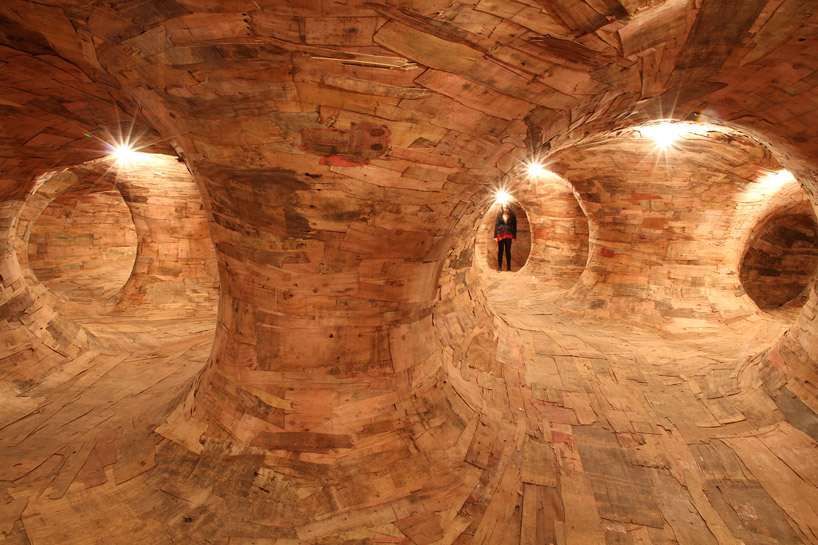
various chambers within the installation allow visitors to walk through and experience the design
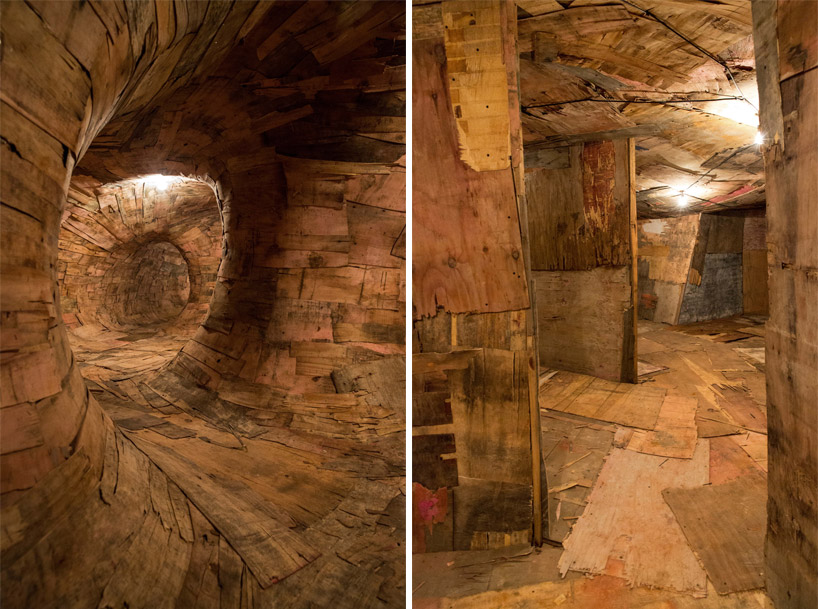
wooden material surrounds the interior of the work
photo by elaine maziero
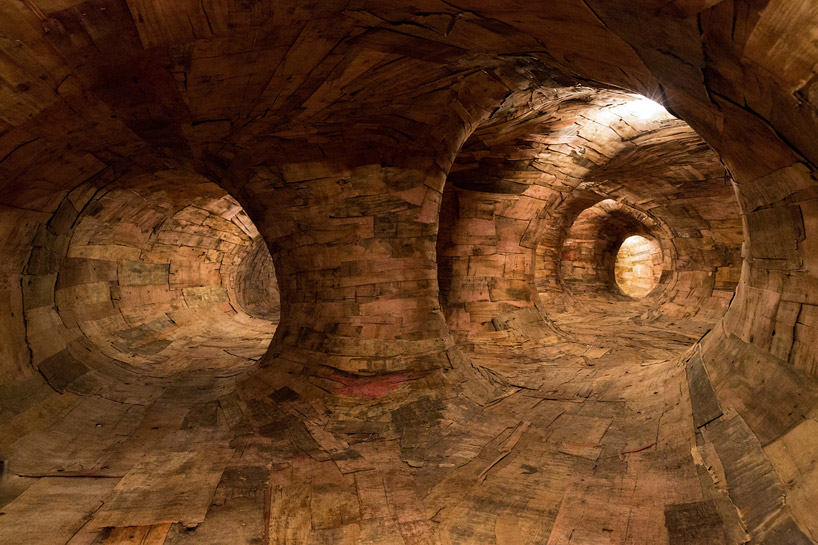
two tunnels vary in route
photo by elaine maziero
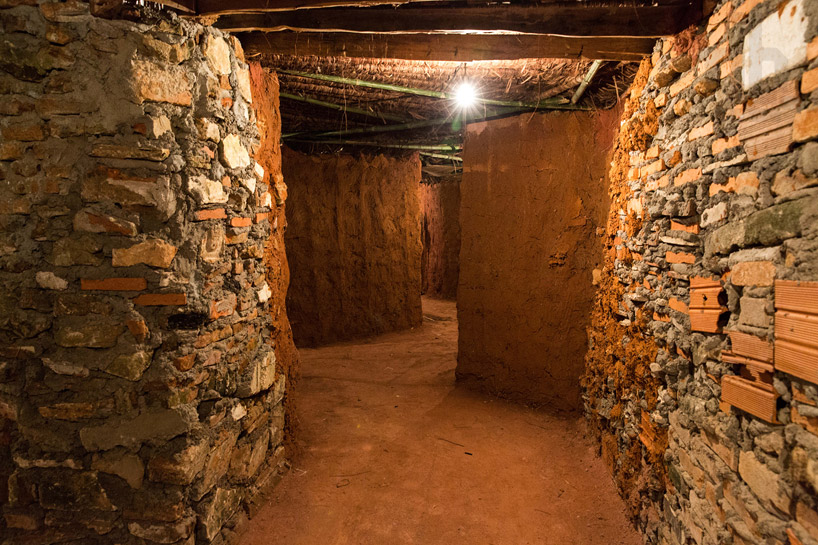
as the visitor walks through the installation, they arrive at a more architecturally stable space
photo by elaine maziero
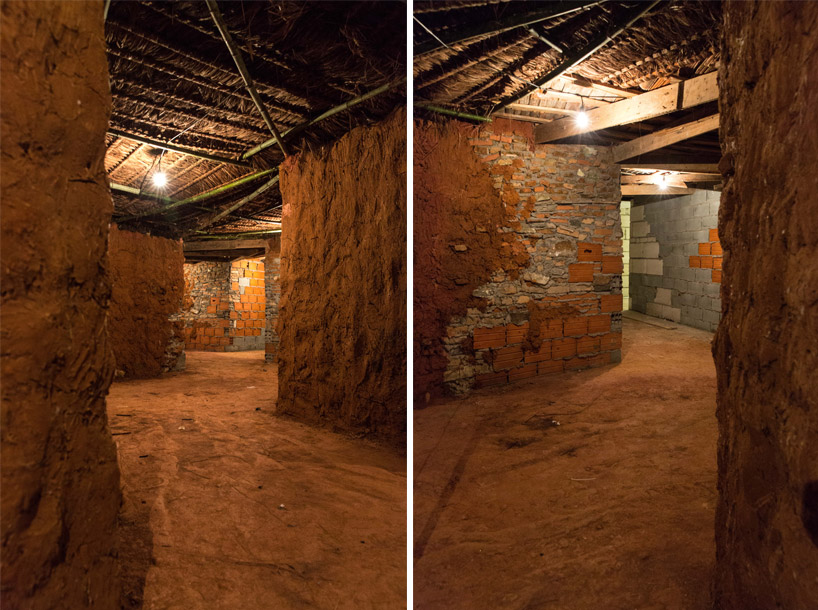
bricks build up the finishing part of the work
photo by elaine maziero
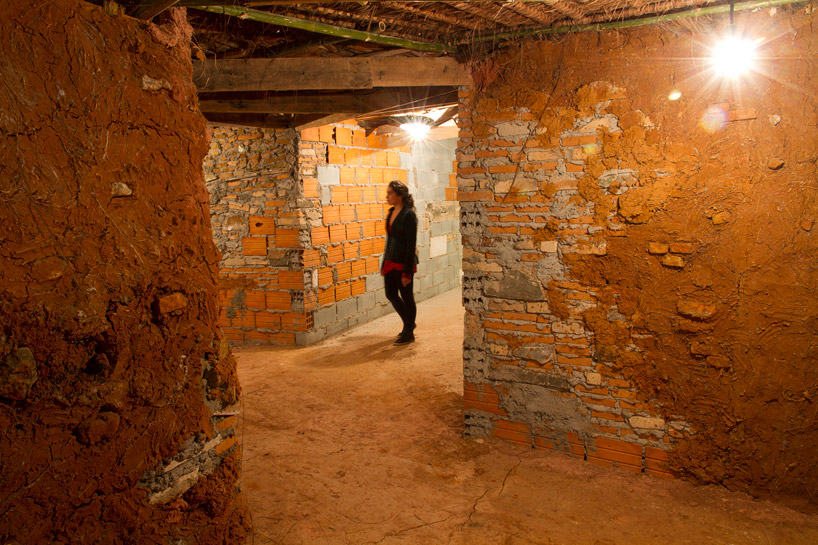
an observer weaves through the pathways
















